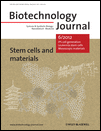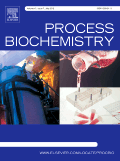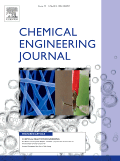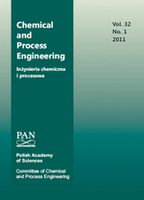
BIOPROCESS AND BIOSYSTEMS ENGINEERING
Scope & Guideline
Connecting Ideas for a Greener Tomorrow
Introduction
Aims and Scopes
- Bioprocess Development and Optimization:
Research aimed at improving the efficiency and yield of bioprocesses, including fermentation and enzymatic processes, often focusing on optimizing conditions such as pH, temperature, and substrate feed. - Microbial and Enzymatic Biocatalysis:
Studies exploring the use of microorganisms and enzymes for the production of valuable biochemicals, biofuels, and biopolymers, emphasizing their applications in industrial biotechnology. - Nanobiotechnology and Green Synthesis:
Research on the biosynthesis of nanoparticles using biological materials, examining their applications in various fields such as medicine, agriculture, and environmental remediation. - Waste Valorization and Bioremediation:
Focus on utilizing waste materials for bioprocessing and bioremediation, including the conversion of agricultural and industrial by-products into valuable products. - Sustainable Production of Biofuels and Biochemicals:
Research aimed at developing sustainable methods for the production of biofuels and biochemicals from renewable resources, addressing environmental concerns and energy needs. - Systems Biology and Metabolic Engineering:
Application of systems biology approaches and metabolic engineering techniques to enhance the production capabilities of microorganisms and plants for biotechnological applications.
Trending and Emerging
- Microalgae and Cyanobacteria Utilization:
There is a growing trend in the utilization of microalgae and cyanobacteria for bioprocesses, particularly in the production of biofuels, bioplastics, and high-value metabolites. - Synthetic Biology and Genetic Engineering:
Research involving synthetic biology and genetic engineering techniques is gaining momentum, focusing on the design and construction of new biological parts and systems for enhanced bioproduction. - Bioprocess Intensification:
Studies on methods for intensifying bioprocesses, such as the use of high-density cell cultures, continuous processing, and advanced bioreactor designs, are increasingly prominent. - Sustainable Waste Management Practices:
Emerging research focuses on innovative strategies for waste management and valorization, including the bioconversion of waste into valuable products. - Bioinformatics and Computational Modeling:
There is an increasing integration of bioinformatics and computational modeling approaches to better understand and optimize bioprocesses, reflecting a trend towards data-driven research.
Declining or Waning
- Traditional Chemical Synthesis Methods:
Research focused on conventional chemical synthesis methods is declining as the journal increasingly emphasizes biocatalytic and sustainable approaches to production. - Single-Organism Studies:
There is a noticeable reduction in studies that focus solely on individual organisms without considering the broader interactions within microbial communities or ecosystems. - Basic Descriptive Studies:
Studies that primarily describe biological phenomena without providing new insights into applications or processes are becoming less common, as the journal favors more applied research.
Similar Journals

BIOTECHNOLOGY LETTERS
Transforming Ideas into Impactful Biotechnological SolutionsBIOTECHNOLOGY LETTERS is a prestigious peer-reviewed journal that has been at the forefront of biotechnology research since its inception in 1979. Published by Springer, this esteemed journal serves as a vital platform for disseminating cutting-edge research in the fields of applied microbiology, bioengineering, and biotechnology, with a focus on innovative methodologies and technologies. With an impact factor reflecting its critical contribution to the discipline, BIOTECHNOLOGY LETTERS resides in the Q2 and Q3 tiers of various scientific categories, placing it among the notable journals in the biotechnological landscape. Although it offers traditional access options and does not feature open access, the journal embraces a global readership, encouraging submissions from researchers, professionals, and students eager to explore the dynamic advancements in biotechnology. Situated in the Netherlands, it continues to shape the future of the field through relevant, impactful research that addresses contemporary challenges and opportunities in medicine and beyond.

Biochemical Engineering Journal
Driving Innovation in Biochemical Engineering for a Sustainable FutureBiochemical Engineering Journal, published by Elsevier, is an esteemed platform dedicated to advancing research in the fields of bioengineering, biomedical engineering, biotechnology, and environmental engineering. This journal, with ISSN 1369-703X and E-ISSN 1873-295X, has carved a niche for itself since its inception in 1998, boasting a commendable Q2 category ranking in multiple pertinent disciplines as of 2023. The journal's strong impact factor reflects its influence, with Scopus rankings placing it in the top quartiles across relevant fields including Environmental Engineering and Bioengineering. With a focus on both fundamental and applied research, it aims to inform and inspire academia and industry alike by disseminating high-quality studies, reviews, and innovative methodologies. Researchers and professionals are encouraged to explore this reputable journal to remain at the forefront of emerging trends and technologies in biochemical engineering.

Biotechnology Journal
Connecting researchers to the latest breakthroughs in biotechnology.Biotechnology Journal, published by WILEY-V C H VERLAG GMBH, stands at the forefront of biotechnological research and innovation, recognized for its significant contributions to the fields of applied microbiology, molecular medicine, and broader biotechnology. With its ISSN 1860-6768 and E-ISSN 1860-7314, this journal has achieved impressive 2023 quartile rankings, positioning itself in Q1 for both Applied Microbiology and Biotechnology and Medicine (miscellaneous), and Q2 in Molecular Medicine, showcasing its impact and relevance within the scientific community. Based in Germany, the journal aims to disseminate high-quality research that drives advancements in biotechnological applications, fostering a platform for researchers, professionals, and students to engage with cutting-edge developments. With its ongoing commitment to excellence, the Biotechnology Journal is an essential resource for those seeking to stay informed about the latest trends and innovations in biotechnology.

PROCESS BIOCHEMISTRY
Transforming biochemistry with groundbreaking discoveries.PROCESS BIOCHEMISTRY is a premier journal published by Elsevier Science Ltd, dedicated to advancing the field of biochemistry, microbiology, and bioengineering. With an ISSN of 1359-5113 and an E-ISSN of 1873-3298, this renowned journal is recognized for its impactful contributions, as demonstrated by its Q2 ranking in Applied Microbiology and Biotechnology, Biochemistry, and Bioengineering categories as of 2023. Covering a wide array of topics since its inception in 1950, PROCESS BIOCHEMISTRY serves as a crucial platform for researchers and professionals to disseminate innovative findings and develop new insights in enzyme technology, metabolic pathways, and bioreactor design. Although the journal operates under a non-open access policy, it remains vital for those engaged in cutting-edge biochemical research and development. Located in the United Kingdom, it continues to facilitate scientific discourse and foster collaboration among industry experts and academic scholars worldwide.

Biotechnology for Biofuels and Bioproducts
Empowering a Greener Tomorrow Through Biofuels and BioproductsBiotechnology for Biofuels and Bioproducts is a premier international journal published by BMC, situated in the United Kingdom, focusing on the critical intersection of biotechnology and sustainable energy solutions. Established as an Open Access platform in 2022, this journal aims to disseminate high-quality research that advances our understanding of biofuels, bioproducts, and their applications within environmental sustainability. With its commendable Q2 ranking in multiple relevant categories including Applied Microbiology and Biotechnology and Renewable Energy, this journal serves as a vital resource for researchers, industry professionals, and students seeking to explore innovative biotechnological approaches to address global energy challenges. The journal emphasizes interdisciplinary research, fostering collaboration among scientists in biotechnology, environmental science, and policy-making. As it continues to publish impactful findings until 2024, Biotechnology for Biofuels and Bioproducts remains essential for those dedicated to advancing sustainable methodologies in energy and resource management.

Chemical Engineering Journal
Leading the charge in multidisciplinary chemical research.The Chemical Engineering Journal, published by Elsevier Science SA, stands as a premier platform for groundbreaking research in the multidisciplinary fields of chemical engineering, chemistry, and environmental science. With an impressive impact factor and ranking in the Q1 category across multiple categories such as Chemical Engineering, Chemistry, and Environmental Chemistry for 2023, this journal not only leads in publishing high-quality research but also emphasizes the latest advancements and innovative solutions in these critical areas. Researchers and professionals benefit from the rigorous peer-review process and can access a wealth of knowledge through the journal’s extensive archive, which has been a staple in academia since 1975. The Chemical Engineering Journal is vital for anyone aiming to advance their understanding of complex chemical processes, engineering applications, and environmental impacts, making it an essential resource for students, academics, and industry experts alike.

CHEMIE INGENIEUR TECHNIK
Exploring the Intersection of Chemistry and Engineering.CHEMIE INGENIEUR TECHNIK, published by WILEY-V C H VERLAG GMBH, stands as a significant academic journal in the fields of Chemical Engineering, Chemistry, and Industrial and Manufacturing Engineering. With an ISSN of 0009-286X and an E-ISSN of 1522-2640, this esteemed journal has been contributing to the body of knowledge since 1949 and plans to continue its legacy until 2024. Notably, the journal holds a Q2 quartile ranking in 2023 across various categories, illustrating its recognized impact and relevance within the scientific community, with Scopus ranks indicating it falls within the top 60th to 51st percentiles of its respective fields. Although currently not open access, CHEMIE INGENIEUR TECHNIK provides readers with comprehensive insights into contemporary research, technological advancements, and practical applications, making it an essential resource for researchers, professionals, and students who are keen to stay abreast of developments in chemical processes and engineering advancements.

Engineering Review
Pioneering pathways for engineering excellence.Engineering Review is a prominent academic journal published by the University of Rijeka, Faculty of Engineering in Croatia. As an emerging outlet in the field of engineering, the journal has been providing a platform for interdisciplinary research since its inception in 2011, with a commitment to disseminating high-quality studies up to the horizon of 2024. Although currently categorized as Q4 in the Engineering (miscellaneous) section and ranking 242 out of 307 in General Engineering per Scopus metrics, the journal aims to bolster its impact and reach within the engineering community. With a focus on innovative approaches and practical applications in various engineering disciplines, Engineering Review invites contributions from researchers, professionals, and students alike, fostering a collaborative environment for the advancement of engineering research in a global context. While it is not an open-access journal at this time, it remains a vital resource for those engaged in cutting-edge engineering endeavors.

Chemical and Process Engineering-New Frontiers
Shaping the Future of Chemical Processes and TechnologiesChemical and Process Engineering-New Frontiers, published by POLSKA AKAD NAUK and the POLISH ACAD SCIENCES, is a premier academic journal dedicated to advancing the frontiers of chemical engineering and chemistry. With an ISSN of 0208-6425 and an E-ISSN of 2300-1925, this journal serves as a crucial platform for disseminating cutting-edge research and innovative practices in the field. Despite its Q4 ranking in both Chemical Engineering and Chemistry categories and a low percentile ranking in Scopus, the journal aspires to enhance visibility and impact in the scientific community through its focus on novel methodologies and groundbreaking studies. Operating as a traditional journal without open access, it aims to connect researchers, professionals, and students, fostering collaboration and knowledge exchange. With a commitment to publishing impactful research, Chemical and Process Engineering-New Frontiers plays an important role in shaping the future of chemical processes and engineering advancements.

Bioresources and Bioprocessing
Driving Innovation in Renewable Energy and BioprocessingBioresources and Bioprocessing is an esteemed open-access journal published by SPRINGER HEIDELBERG, dedicated to the innovative fields of biomedical engineering, biotechnology, food science, and renewable energy. Since its inception in 2014, the journal has rapidly established itself as a leading platform for high-quality research, boasting a Q2 ranking in key categories such as Biomedical Engineering and Biotechnology, and an impressive Q1 status in Food Science for 2023. With robust Scopus rankings placing it in the top percentiles across multiple disciplines, Bioresources and Bioprocessing serves not only as a conduit for original research but also for critical insights into sustainable bioprocessing techniques that contribute to environmental stewardship. It is particularly aimed at researchers, professionals, and students committed to advancing knowledge in the bioprocessing sphere, promoting evidence-based innovations that leverage biological resources for diverse applications. Emphasizing open access, the journal ensures that cutting-edge research is readily available to a global audience, reinforcing its commitment to scientific communication and collaboration.